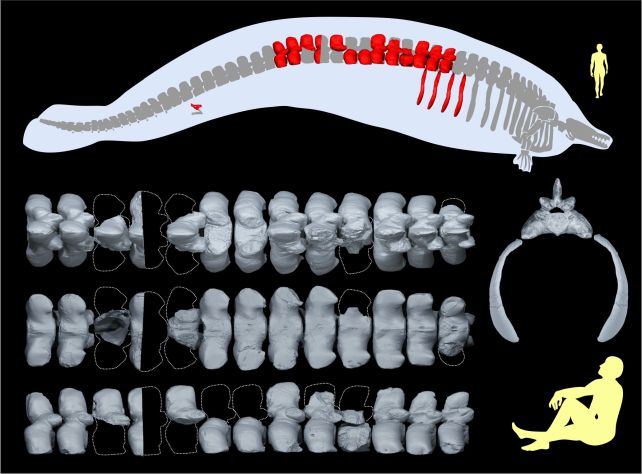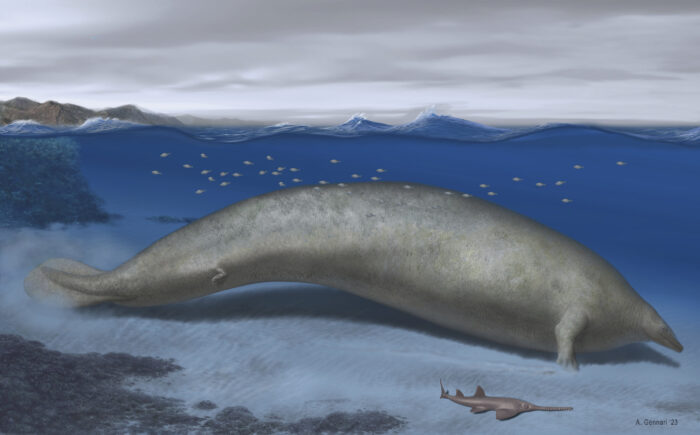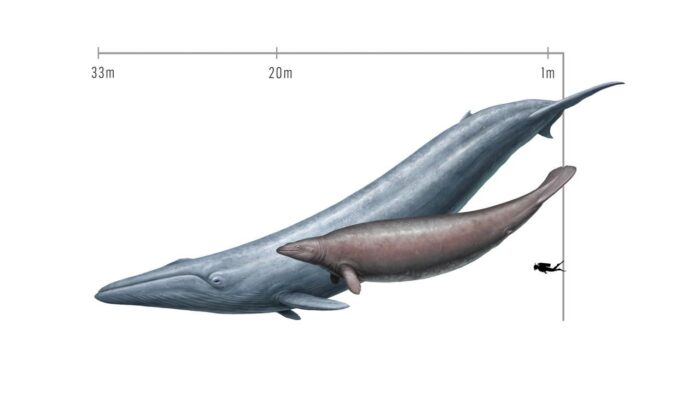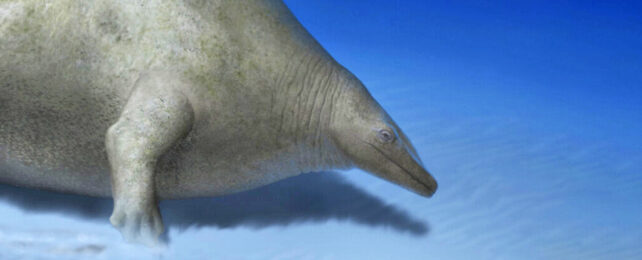Last year, paleontologists discovered the fossil of a 39-million-year-old extinct whale in Peru that appeared to defy the limits of vertebrate size.
The team behind the lucky find estimated Perucetus colossus' body mass to be somewhere between 85 and 340 tonnes. But at 17 to 20 meters in length (around 56 to 65 feet), this would have made the animal impossibly dense, argue paleontologists Ryosuke Motani and Nicholas Pyenson, who were not involved in the initial discovery.
"It would have been a job for the whale to stay at the surface, or even to leave the sea bottom – it would have required continuous swimming against gravity to do anything in the water," says Motani from the University of California Davis.
Instead, Motani and his colleague Pyenson, from the Smithsonian National Museum of Natural History, suggest Perucetus' unusually dense bones threw off the body mass calculations University of Pisa earth scientist Giovanni Bianucci and colleagues published in 2023.
"Perucetus did not exceed the body mass of today's blue whales, and more closely matched the body size and weight of sperm whales," Motani and Pyenson find in their new analysis.

The P. colossus skeleton Bianucci and colleagues first described was incomplete, with no skull to help determine the animal's diet.
Yet the fossilized bones that were uncovered – an assortment of vertebrae, ribs, and an incomplete pelvis – have unusual features, more like those found in manatees (Trichechus) than today's whales.
Manatees' bones are thickened with extra layers, which reduces the bone's inner cavities and increases their outer size. This bone state, known as pachyostosis, is not only seen in modern sea cows but in the extinct marine reptiles, plesiosaurs, too. It helped them regulate buoyancy in their aquatic habitats.
It seems Perucetus may have shared this tactic, with more bone mass offsetting their fat's floating ability to keep them neutrally buoyant.

The original calculations assumed that body and skeletal mass scaled together consistently. But unlike in modern whales, a manatee's bodily flesh is relatively light compared to its skeleton.
Taking this into consideration, Motani and Pyenson propose a 17-meter-long Perucetus should weigh between 60 to 70 tonnes.
"The new weight allows the whale to come to the surface and stay there while breathing and recovering from a dive, like most whales do," says Motani.
Even if the studied specimen was not yet fully grown, and an adult grew up to 20 meters, their 110 tonnes is still no match for a blue whale's 270 tonnes.

So blue whales (Balaenoptera musculus) still reign supreme when it comes to the title of most massive animal of all time.
While not the largest, Perucetus was still considerably hefty so likely a top consumer on body size alone, the researchers conclude. "But it remains unclear what its role may have been in Middle Eocene nearshore ocean food webs."
This research was published in PeerJ.
